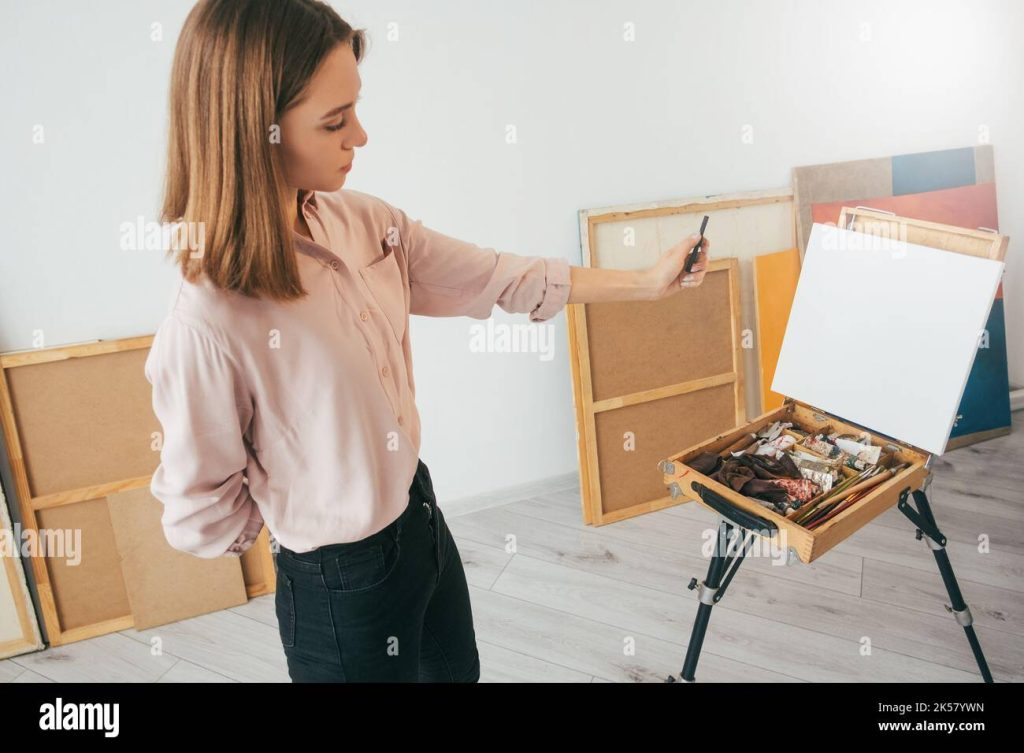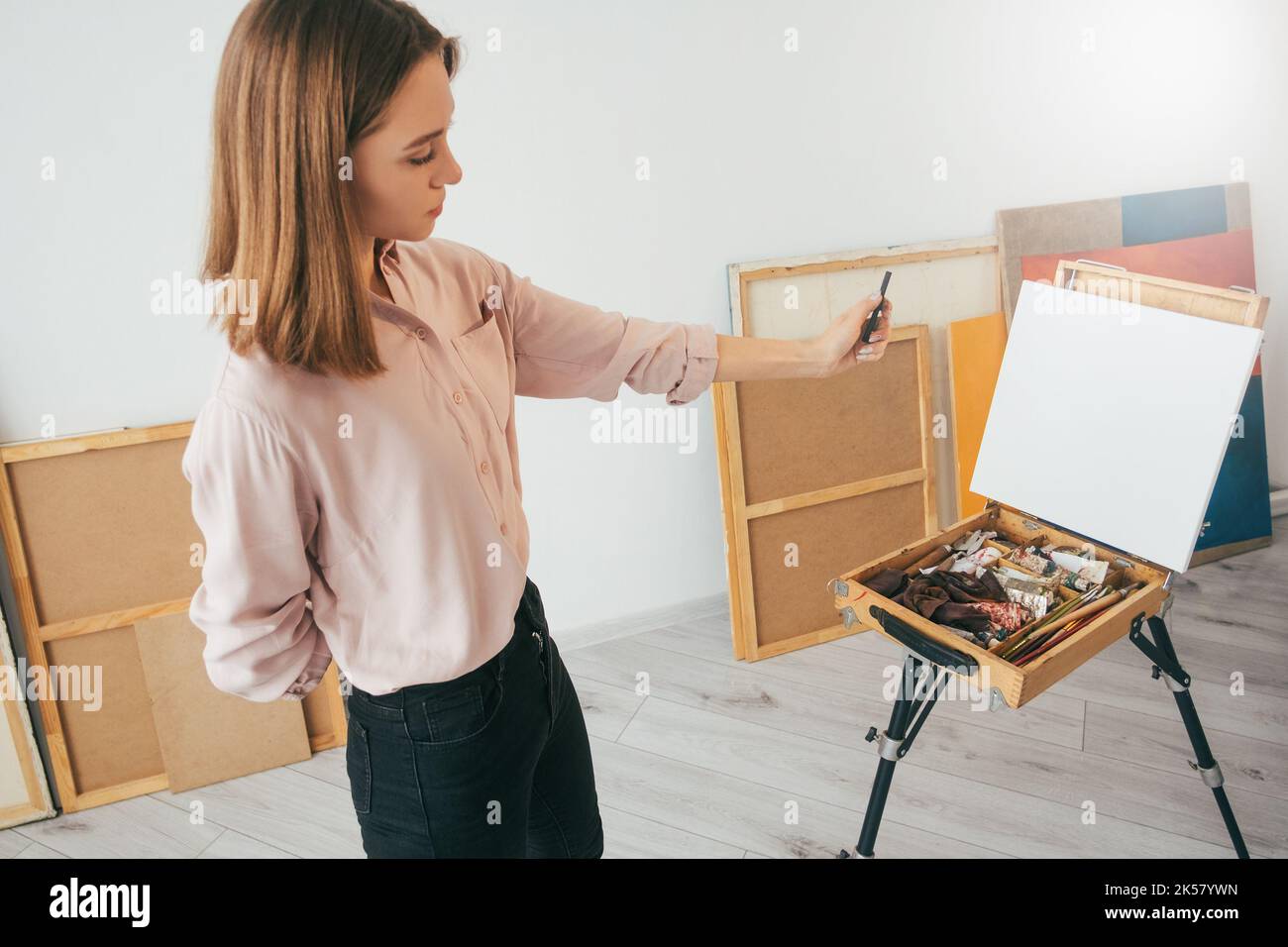
“An Artist’s Perspective: Insights from the Easel”

**Creating Artistic Spaces: A Glimpse into Artists’ Studios and Their Creative Processes**
Studios are where art happens. They are the intimate, personal spaces where ideas are born, explored, and refined. Whether located in a small corner of a home or a spacious loft, these sanctuaries serve as extensions of the artists’ creativity. In this article, we dive into the inspiring worlds of three artists—each reflecting on how their work environments fuel their process.
—
### **Betsy Stirratt: Finding Inspiration in a Small, Personal Studio**
Betsy Stirratt works from a home-based studio where space constraints challenge the size of the pieces she can produce. However, the intimate nature of the environment provides comfort and consistent inspiration. Surrounded by personal objects and the natural light shining through the windows, Betsy harmonizes her artistic process with the ebb and flow of daily life. She notes how the space draws her in between her regular chores and how afternoons are her golden hours for productivity.
“I love being surrounded by all of my collected items and plants,” she explains. The compiled treasures and natural elements create a calming environment where she feels unique inspiration stirring.
While Betsy is content with her space, she does yearn for more room—especially larger walls—to accommodate bigger projects. Yet, her studio continues to serve as a cherished space where her mix of photography and painting thrives while she connects with her local community in Indiana.
—
### **Hao Feng: Balancing Tradition and Creativity After Dusk**
Hao Feng’s studio in Summit, New Jersey, is a different kind of sanctuary—a place of quiet productivity that comes alive in the silence of the night. By day, Hao is likely found immersed in other obligations, but the creativity truly flows after dark.
His work bridges traditional Chinese painting and contemporary techniques, and music provides the rhythm to his creative process. He often works on multiple pieces simultaneously, letting each artwork evolve organically in its own time. “The studio space helps me access deeper layers of expression,” Feng shares, highlighting how the quiet environment shapes and nurtures his ideas.
But Feng’s connection is not limited to his studio walls. He actively engages with the local community by offering free Chinese painting workshops, using art as a bridge for cultural exchange. His teachings bring the beauty of traditional techniques and artistic conversations out into the public, creating a dialogue between his studio practice and the world outside.
—
### **Marsha Pippenger: A Spacious Studio, A Paper Paradise**
For Marsha Pippenger, her studio near Dayton, Ohio, is not just a working space—it’s a haven for her love of paper. Shelves lined with handmade and inked paper supplies fill her studio, supporting her creative focus. North-facing windows flood the room with soft, consistent light, making it the perfect environment for demanding tasks that form her intricate work.
“I love audiobooks or podcasts while I work,” Pippenger reveals, emphasizing how the tranquil setting and absorbed focus benefit from just the right amount of background sound. The cool air and ample room for physically spreading out her materials also allows her to immerse herself fully in the finer details of each project.
However, it’s not only her indoor studio that enriches her work. Friendly exchanges with other nearby artists and inspired small-business owners at a local studio complex add another dimension to her day-to-day experiences. Though she sometimes wonders what it would be like to work nearer to many of her fellow artists, she has no plans to leave her beloved workspace anytime soon.
—
### **A Common Thread: Loving Their Space, But Wishing for More**
While each artist reveres their studio as a sacred space where creativity is fostered, there is a common underlying theme: the desire for more room. Fundamentally, most artists appreciate the space they have but aspire for something bigger—a broader canvas, if you will.
Betsy Stirratt dreams of larger walls, while Hao Feng envisions the perfect match between his studio and his nocturnal creative rhythm. For Marsha Pippenger, her love for her expansive paper collection could possibly belong in an even larger space. Nevertheless, the energy and atmosphere within their studios fuel the artistic expression they need to let their work flourish.
—
### **Inspiration from Community and Nature**
Whether it’s the collected objects in Betsy Stirratt’s home, the meditative music in Hao Feng’s nighttime studio, or the vast shelves of paper in Marsha Pippenger’s workspace, these neutral zones help their practices take form. The spaces are built on memories, textures, conversations, and reflections that, once aligned, create powerful art.
Despite the eagerness for larger walls or more tools, the studios’ proximity to the outside world enriches their work. Hao shares his expertise and Cheng-inspired knowledge through workshops; Marsha actively engages with a local artist community; and Betsy finds joy in being involved with her Indianapolis community. These interactions influence their practice, creating a loop between